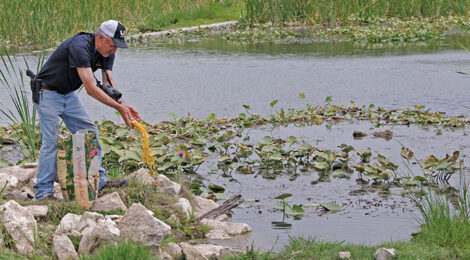
Likely Pig Places
Story by Bill L. Olson
Hunters looking for descendants of wild, free-range Eurasian hogs, brought to this continent by European explorers in the 1500’s, don’t need to look far – they are everywhere. According to data from the University of Georgia Center for Invasive Species and Ecosystem Health, Texas has the most free-range wild swine in North America with an estimated, and growing population of over 2.5 million.
According to various state agency studies, including Texas A&M AgriLife, reports the average annualized estimate of feral swine population growth is 21 percent per year. Regardless of who has the most accurate population numbers or estimated growth projctions there are plenty of hogs to hunt, trap, take to market or enjoy on one’s table. Those animals are damaging millions of dollars to agriculture areas, rangelands, riparian areas and even developed areas of the Lone Star State.
Many times, the hard-to-pattern movement of individual boar and sounders can be as frustrating as getting a reliable handle on the true magnitude of Texas’ hog problem. Feral pigs can be in one place rooting and doing their collective damage one day, and then suddenly make a move some distance, even miles away. The prospect of them returning, and when that might occur creates opportunities for even more head-scratching.
To help reduce hog numbers landowners, hunters, trappers, and game managers should focus are the hog’s traits that are most consistent. That begins with their need for water. However, the vast size of the Texas, its diverse eco-systems plus climatic differences from east to west, and north to south all have a bearing on how hogs may or may not react.
************************************************************************
To read more, click here to SUBSCRIBE







